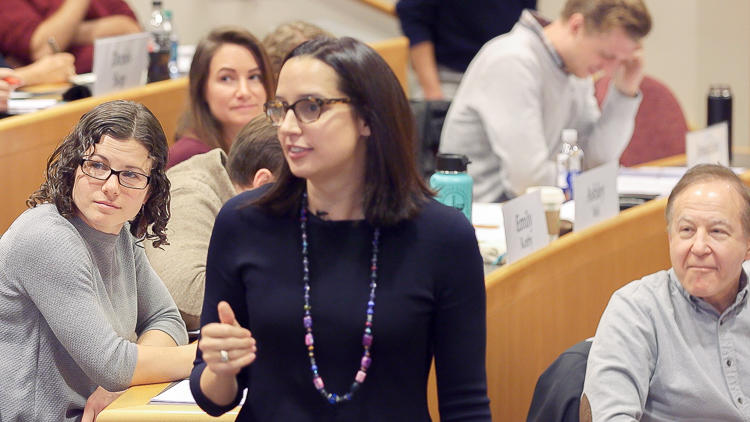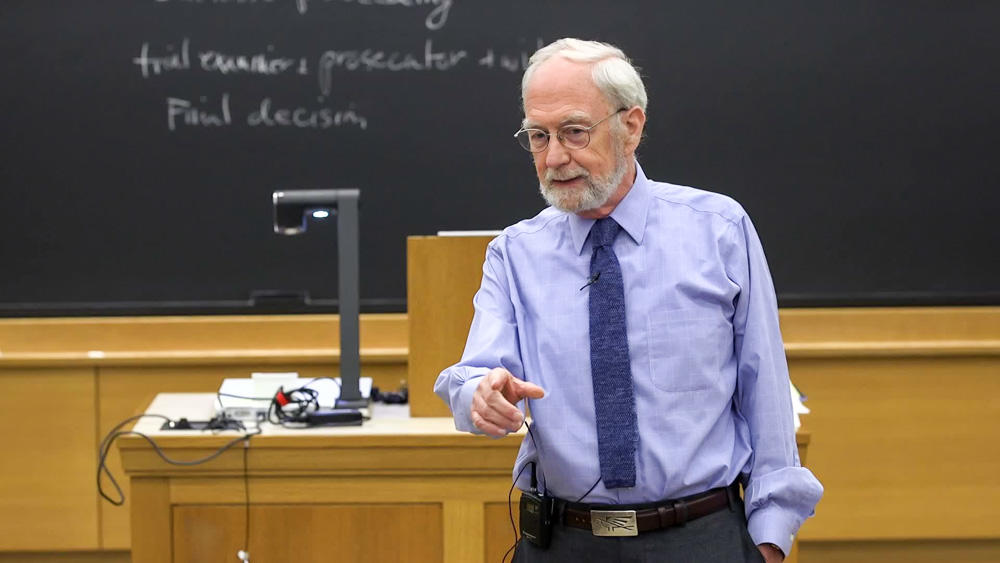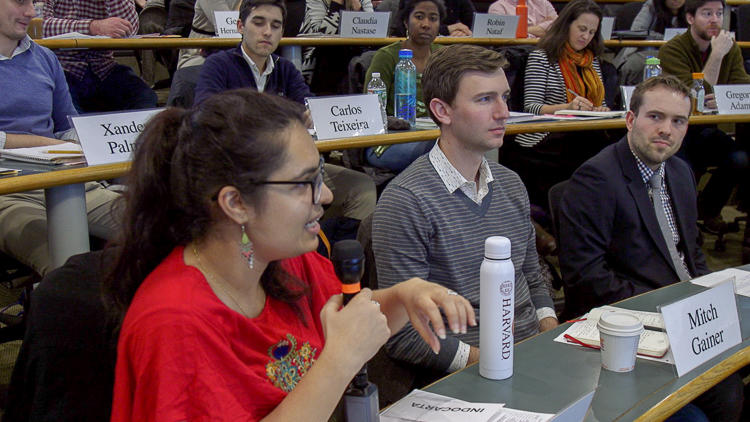Though commonly associated with large enrollment law school courses, cold-calling need not be limited to such formats. Rather, it can be valuable across content areas as it infuses lessons with student-teacher dialogue and brings quieter students into the fold. In this video, Todd Rakoff strategically cold-calls to encourage participation from less vocal students.
Expanding participation through cold-calling
Instructor
Todd Rakoff, Byrne Professor of Administrative Law
Student Group
Graduate
School
Harvard Law School
Course
Legislation & Regulation
Group Size
80 students
Additional Details
First-year requisite
- Make expectations and your reasons for cold-calling clear
- Aim for more constructive, motivational purposes than for the purposes of planting traps for students or putting them on the spot
- Identify the less vocal students in the room and solicit their participation through the move but temper their contributions with participation from more regularly vocal students to foster more naturally balanced discussions
- Try warm-calling, a less intimidating take on cold-calling in which students are given advanced warning before being called on
- One study finds that cold-calling can improve student preparation outside of the classroom (Levy & Bookin, 2014)
- A review of existing research finds that, if employed consistently, cold-calling can motivate students to sustain focus over longer periods of time (Gardiner, 1994)
- Williams writes that cold-calling can be a turnoff for some students, perceived as a coercive technique to solicit inorganic participation, but when employed with consistency, transparency, and a friendly temperament, students may become progressively more open to the method (1992)
- Another study finds that classes in which cold-calling is routinely employed can see increased voluntary student participation. In addition, such participation may steadily increase the more cold-calling becomes part of the everyday fabric of students’ classroom experience (Dallimore et al., 2006).
- Bean & Peterson (1998) share methods on grading student participation, highlighting the cold-calling method
- Amherst College's Teaching & Learning Collaborative offers a brief overview of how one instructor uses warm-calling
- In a Harvard Magazine article, Professor David Garvin of Harvard Business School discusses cold-calling and the Socratic approach to discussion leading
- In another Instructional Moves video, Jane Mansbridge employs a variation on warm-calling by using pre-work to welcome multiple voices into discussion




